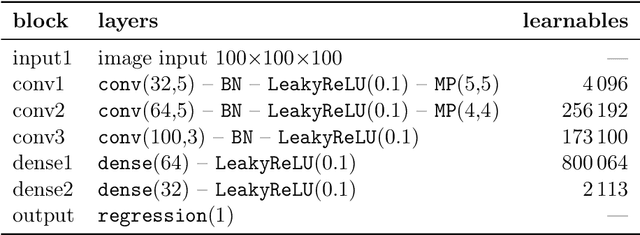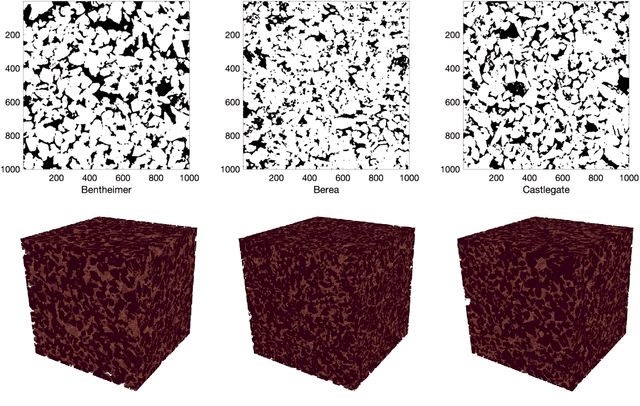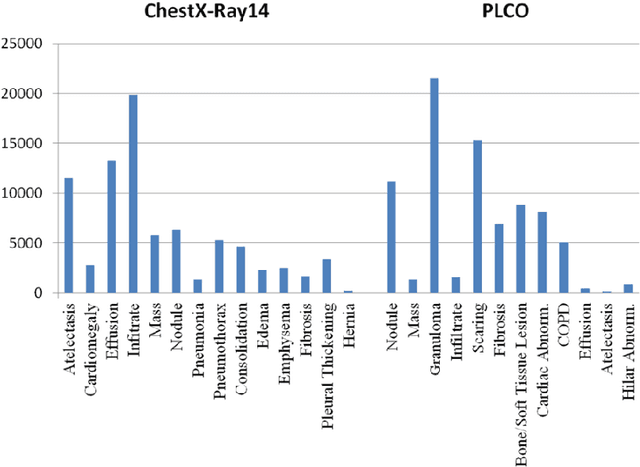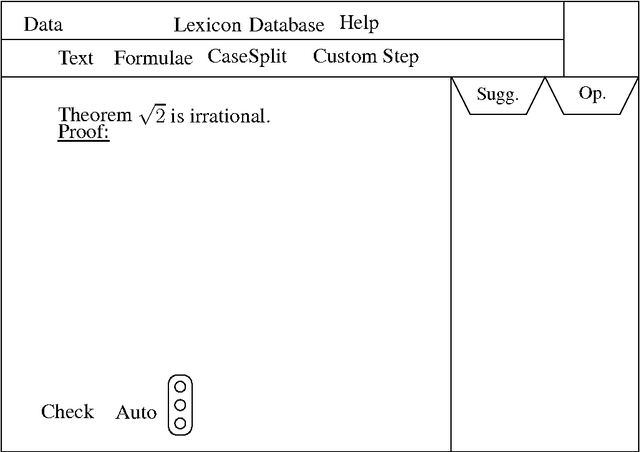Andreas Meier
Estimating relative diffusion from 3D micro-CT images using CNNs
Aug 04, 2022



Abstract:In the past several years, convolutional neural networks (CNNs) have proven their capability to predict characteristic quantities in porous media research directly from pore-space geometries. Due to the frequently observed significant reduction in computation time in comparison to classical computational methods, bulk parameter prediction via CNNs is especially compelling, e.g. for effective diffusion. While the current literature is mainly focused on fully saturated porous media, the partially saturated case is also of high interest. Due to the qualitatively different and more complex geometries of the domain available for diffusive transport present in this case, standard CNNs tend to lose robustness and accuracy with lower saturation rates. In this paper, we demonstrate the ability of CNNs to perform predictions of relative diffusion directly from full pore-space geometries. As such, our CNN conveniently fuses diffusion prediction and a well-established morphological model which describes phase distributions in partially saturated porous media.
Estimating permeability of 3D micro-CT images by physics-informed CNNs based on DNS
Sep 04, 2021



Abstract:In recent years, convolutional neural networks (CNNs) have experienced an increasing interest for their ability to perform fast approximation of effective hydrodynamic parameters in porous media research and applications. This paper presents a novel methodology for permeability prediction from micro-CT scans of geological rock samples. The training data set for CNNs dedicated to permeability prediction consists of permeability labels that are typically generated by classical lattice Boltzmann methods (LBM) that simulate the flow through the pore space of the segmented image data. We instead perform direct numerical simulation (DNS) by solving the stationary Stokes equation in an efficient and distributed-parallel manner. As such, we circumvent the convergence issues of LBM that frequently are observed on complex pore geometries, and therefore, improve on the generality and accuracy of our training data set. Using the DNS-computed permeabilities, a physics-informed CNN PhyCNN) is trained by additionally providing a tailored characteristic quantity of the pore space. More precisely, by exploiting the connection to flow problems on a graph representation of the pore space, additional information about confined structures is provided to the network in terms of the maximum flow value, which is the key innovative component of our workflow. As a result, unprecedented prediction accuracy and robustness are observed for a variety of sandstone samples from archetypal rock formations.
Learning to recognize Abnormalities in Chest X-Rays with Location-Aware Dense Networks
Mar 12, 2018



Abstract:Chest X-ray is the most common medical imaging exam used to assess multiple pathologies. Automated algorithms and tools have the potential to support the reading workflow, improve efficiency, and reduce reading errors. With the availability of large scale data sets, several methods have been proposed to classify pathologies on chest X-ray images. However, most methods report performance based on random image based splitting, ignoring the high probability of the same patient appearing in both training and test set. In addition, most methods fail to explicitly incorporate the spatial information of abnormalities or utilize the high resolution images. We propose a novel approach based on location aware Dense Networks (DNetLoc), whereby we incorporate both high-resolution image data and spatial information for abnormality classification. We evaluate our method on the largest data set reported in the community, containing a total of 86,876 patients and 297,541 chest X-ray images. We achieve (i) the best average AUC score for published training and test splits on the single benchmarking data set (ChestX-Ray14), and (ii) improved AUC scores when the pathology location information is explicitly used. To foster future research we demonstrate the limitations of the current benchmarking setup and provide new reference patient-wise splits for the used data sets. This could support consistent and meaningful benchmarking of future methods on the largest publicly available data sets.
Designing a GUI for Proofs - Evaluation of an HCI Experiment
Mar 23, 2009



Abstract:Often user interfaces of theorem proving systems focus on assisting particularly trained and skilled users, i.e., proof experts. As a result, the systems are difficult to use for non-expert users. This paper describes a paper and pencil HCI experiment, in which (non-expert) students were asked to make suggestions for a GUI for an interactive system for mathematical proofs. They had to explain the usage of the GUI by applying it to construct a proof sketch for a given theorem. The evaluation of the experiment provides insights for the interaction design for non-expert users and the needs and wants of this user group.
 Add to Chrome
Add to Chrome Add to Firefox
Add to Firefox Add to Edge
Add to Edge